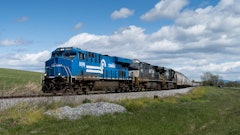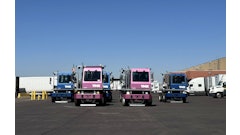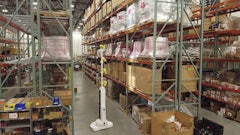
In the current landscape of logistics, today’s transportation fleets serve as the backbone of America’s overall supply chain through on-time deliveries of critical goods. As they continue to power the nation’s economy, supply chain organizations must continue to work with fleet managers to manage the risks involved with transporting goods over long distances. Leveraging data analytics through the implementation of advanced safety technologies and telematics are emerging as a comprehensive solution.
Addressing driver recruitment challenges through risk management
Recruiting drivers has been a significant challenge for fleet managers due to the risks associated with operating heavy-duty trucks, especially as the U.S. Bureau of Labor Statistics finds that truck driving is the seventh most dangerous job in America with around 900 fatalities annually.
Coupled with the number of truck drivers dying on the job increasing by 6.6% over the last five years, increasing safety awareness and fostering a culture of safety has been key to building resilient supply chains where telematics and advanced data analytics bridge the knowledge gap between operations and finance. This approach aids in reducing overall costs while aligning with a strategic asset management plan that prioritizes trucks with advanced safety features.
Impact of rising liabilities on bottom line
The heightened risk in transporting goods not only poses threats to driver safety but also impacts the financial bottom line of supply chain organizations. The American Transportation Research Institute’s (ATRI) report on the Operational Costs of Trucking notes a decline in large truck crashes from 2021 to 2022 by 2.5% according to the Federal Motor Carrier Safety Administration, yet insurance industry experts anticipate an increase in commercial auto liability premiums.
Private fleets, reporting accidents per million miles, are adopting active safety technologies to manage safety proactively, as the National Private Truck Council 2023 Benchmarking Report shows risky drivers are finally being trained up or trained out. Technologies, such as forward-facing event-recording cameras, are providing valuable visibility, tracking, and analytics for supply chain organizations to challenge accidents not at the fault of private fleets.
The integration of technology and analytics in risk management
In the supply chain industry, a robust risk management and safety program begins with the pre-hire process, incorporating background checks and motor vehicle reports. However, the emphasis extends beyond pre-hire screening, recognizing that events can unfold post-hire.
Post-hire monitoring through an effective scoring system, leveraging technology such as telematics, cameras, and collision history, serves as a proactive approach to risk reduction.
Event-based scoring systems, automation, and reporting are crucial components for risk managers, where a telematics system should capture some of the most common events fleets use for scoring. This includes speed, harsh breaking, harsh acceleration, harsh cornering, and seat belt usage. It’s important to decide how to score and weigh each event for your overall risk profile of a driver.
Furthermore, the driver’s collision history should also be considered and incorporated into the scorecard, especially since at fault collisions can be a key indicator of future risk.
Recently, fleet safety professionals have been inquiring more about identifying which “events” should be considered for scoring drivers, as well as how best to aggregate and analyze data from disparate sources into a holistic analytics tool that predicts who is more likely to be involved in a collision. Technology- and vendor-agnostic platforms are a must in these data analytics environments.
The importance of new trucks with advanced safety features
Fleets across the supply chain recognize the value of newer trucks with advanced safety features. This upgrade is viewed as a strategic and competitive move, prioritizing driver safety and benefiting the bottom line. Supply chain organizations need a clear understanding of how this upgrade translates to the finance side of the business.
Investing in modern heavy-duty trucks with collision mitigation systems, lane departure warnings, and automatic emergency braking not only enhances safety but also contributes to a substantial reduction in accident-related costs. In fact, according to settlement amounts of trucking cases settled between 2015-2023, the average truck accident settlement amount was recorded at $73,109, which includes cases where the defendant was operating a tractor trailer or other heavy/commercial truck.
Furthermore, insurance companies increasingly reward organizations that prioritize safety. Upgrading to trucks equipped with advanced safety features not only reduces the likelihood of accidents but also positions the organization as a lower risk for insurers. In the last decade, truck insurance premiums have witnessed a gradual but consistent rise, according to data from ATRI. Premiums have surged from 6.4 cents per mile in 2013 to 8.8 cents per mile in 2022. When viewed in terms of hourly costs, this represents an increase from $2.57 in 2013 to $3.57 in 2022.
Supply chain organizations remain important in today’s operations of transportation fleets, playing a large role in the transport of critical goods. Those prioritizing safety and risk management through data analytics, telematics, and newer equipment position themselves as competitive leaders. This approach fosters stronger communication between finance teams, risk management, and the C-level, ensuring resilience and competitiveness in the dynamic supply chain industry.



















